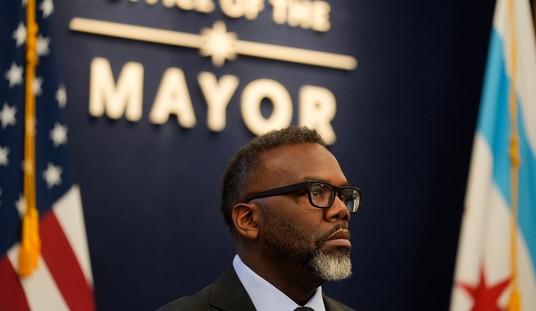After a year of mostly mediocre job-creation numbers, the US economy has regained its 2017 feel over the last four months. Today’s job report from the Bureau of Labor Statistics shows that the US added 273,000 jobs in February, the third time in the last four months that job creation has exceeded 250K. The unemployment mark went back to 3.5% as labor-force numbers settled back down after a notable shift last month:
Total nonfarm payroll employment rose by 273,000 in February, and the unemployment rate was little changed at 3.5 percent, the U.S. Bureau of Labor Statistics reported today. Notable job gains occurred in health care and social assistance, food services and drinking places, government, construction, professional and technical services, and financial activities. …
The labor force participation rate remained at 63.4 percent in February. The employment-population ratio, at 61.1 percent, changed little over the month but was up by 0.4 percentage point over the year. (See table A-1.)
The number of persons employed part time for economic reasons, at 4.3 million, changed little in February. These individuals, who would have preferred full-time employment, were working part time because their hours had been reduced or they were unable to find full-time jobs. (See table A-8.)
In February, 1.4 million persons were marginally attached to the labor force, little changed from the previous month. These individuals were not in the labor force, wanted and were available for work, and had looked for a job sometime in the prior 12 months but had not looked for work in the 4 weeks prior to the survey. Discouraged workers, a subset of the marginally attached who believed that no jobs were available for them, numbered 405,000 in February, little different from the previous month.
Revisions to December and January added 85,000 jobs to their previous reports, making the new January total the same as this month’s. The three-month average for job creation now stands at a rather robust 243,000, which might seem a bit incredible at the moment as we worry about economic damage from the coronavirus spread.
Wages also looked strong:
In February, average hourly earnings for all employees on private nonfarm payrolls increased by 9 cents to $28.52. Over the past 12 months, average hourly earnings have increased by 3.0 percent. Average hourly earnings of private-sector production and nonsupervisory employees increased by 8 cents to $23.96 in February. (See tables B-3 and B-8.)
The average workweek for all employees on private nonfarm payrolls rose by 0.1 hour to 34.4 hours in February. In manufacturing, the workweek increased by 0.2 hour to 40.7 hours, and overtime edged up by 0.1 hour to 3.2 hours. The average workweek for production and nonsupervisory employees on private nonfarm payrolls increased by 0.1 hour to 33.7 hours.
CNBC’s Jeff Cox writes that the report “smashes expectations,” which is perhaps even an understatement. Economists had predicted 175,000 jobs added:
The Labor Department reported Friday that the U.S. economy added 273,000 new jobs during the month, while the unemployment rate was 3.5%, matching its lowest level in more than 50 years. An alternative measure of joblessness that counts those not looking for work and holding part-time jobs for economic reasons edged higher to 7%.
Economists surveyed by Dow Jones had been looking for payroll growth of 175,000 and a 3.5% jobless level. Average hourly earnings grew by 3% over the past year, in line with estimates, while the average work week, considered a key measure of productivity, nudge up to 34.4 hours.
The Wall Street Journal was also surprised, and questions whether the coronavirus can put a dent in this jobs market:
Some companies have expressed concern in recent days about the business impact of the virus and the global economic slowdown. United Airlines Holdings Inc. announced a hiring freeze through the end of June as the spread of the virus depressed bookings. Hyatt Hotels Corp. also froze hiring at some properties as the growing coronavirus outbreak dampens demand for travel.
While virus-related uncertainty could lead to a wider slowdown in hiring in future months, many employers are still reluctant to cut workers given the virus could soon pass and the labor market remains tight. Jobless claims, a proxy for company layoffs, declined to 216,000 last week, a historically low level.
Gigi Schweikert, president of child-care franchise Lightbridge Academy, said the virus is not impeding hiring plans. The 1,600-employee company is looking to add nearly 400 teachers and directors this year as franchises expand near growing populations of dual-income earners.
“It’s still extremely difficult to hire,” she said. “With the unemployment rate as low as it is, there are fewer candidates who are available for the positions.”
The Associated Press isn’t so sure, but also acknowledges that it might not do as much damage as some fear:
If employers were to start slashing jobs as a consequence of the virus, it could significantly escalate the economic damage. For that reason, a range of job market barometers will provide some of the most vital signals about how the economy is withstanding the virus’ impact.
Widespread layoffs can transform slowdowns in just one or two sectors — the travel industry, say, or manufacturing — into a full-blown downturn for the overall economy. When workers lose jobs and pay, they typically cut spending. Their friends and relatives who are still employed grow anxious about their own jobs and wary of spending freely, a cycle that can trigger further job cuts.
So long as monthly job gains remain above 100,000 or so, the unemployment rate should stay low and the economy may be able to avoid a downturn. If the monthly pace were to sink below that level for a sustained period, joblessness would likely rise.
It might also have a more nuanced effect. Companies with supply lines in China will have to replace those, requiring more work here even if those lines get shifted to other overseas locations. If some companies relocate supply lines back to the US, there is even more potential for job creation. It’s easy to see why the White House is looking to expand legal immigration at the moment to keep this dynamism percolating, even if one disagrees with the need or the policy.
Politically speaking, it’s just what Donald Trump needs. The question will be how long this peak can be maintained, and whether it doesn’t get dragged down by summer doldrums just as most people start thinking about the general election. For now, though, Trump’s prospects on the economy couldn’t be brighter.








Join the conversation as a VIP Member